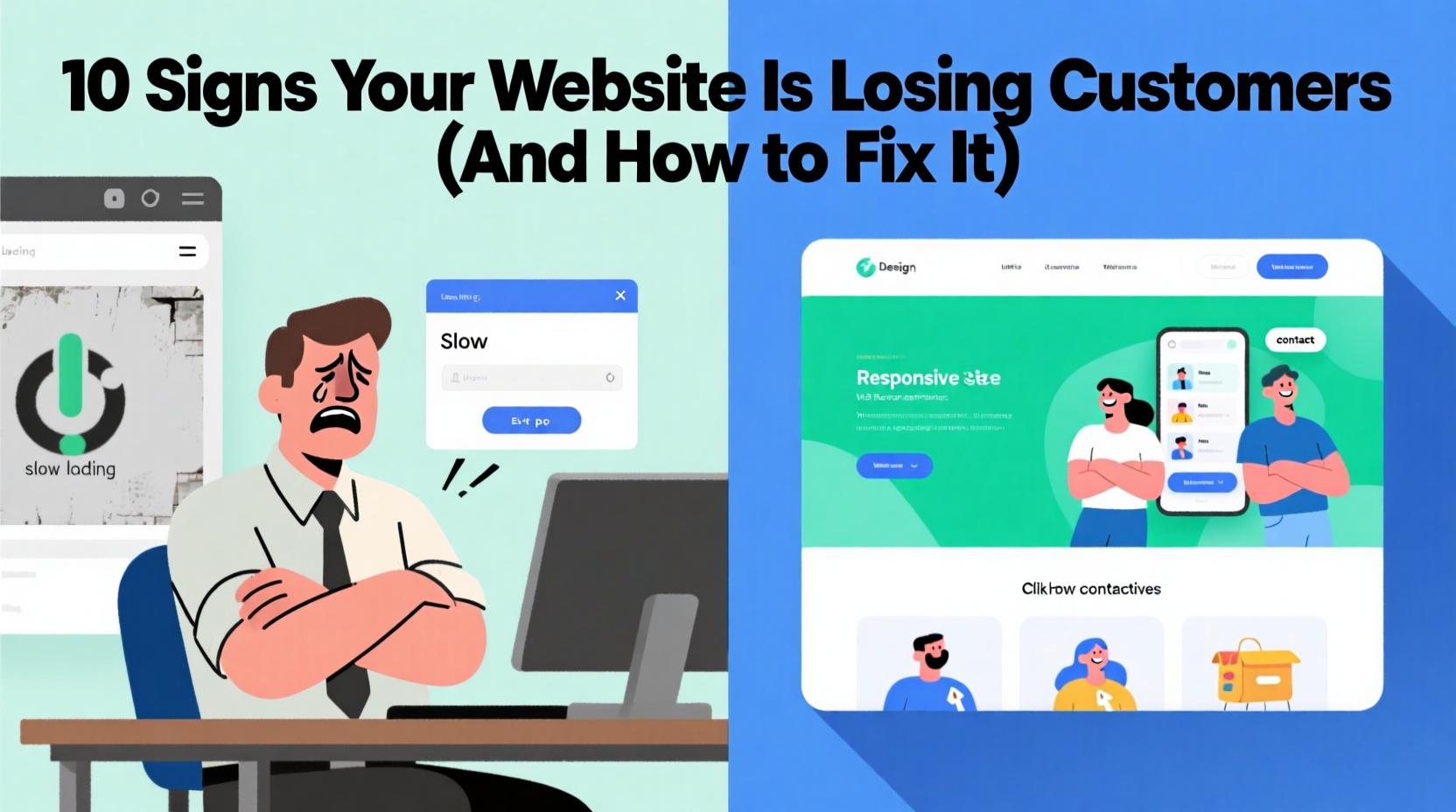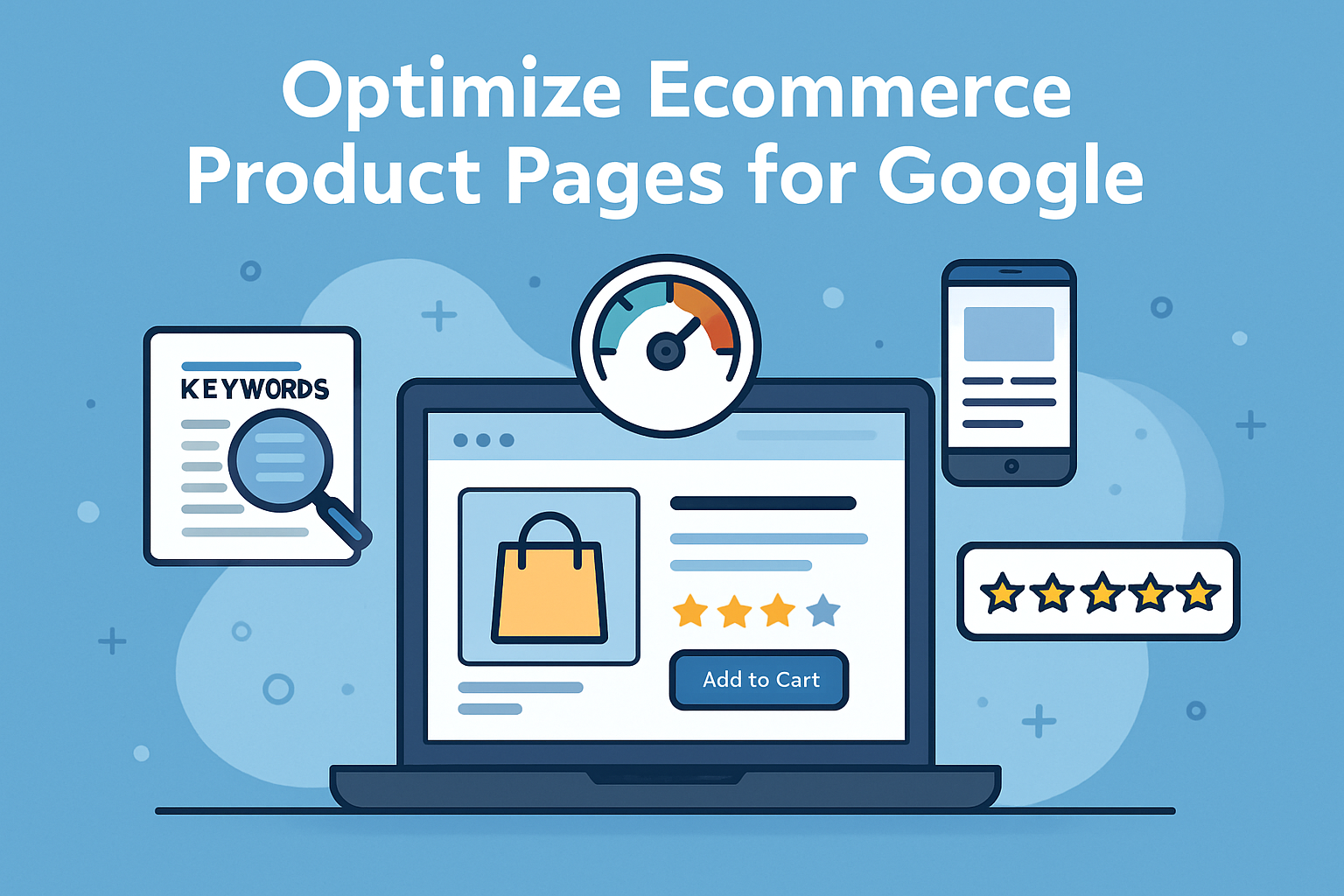Introduction
In today’s digital era, your website is often the first impression your business makes. If it’s underperforming, outdated, or hard to use, you could be losing customers—and money—without even realizing it. In this post, we’ll look at 10 concrete signs your business website is losing customers, along with actionable fixes. Use these insights to optimize your site, keep visitors engaged, and convert more leads into clients.
Why This Matters
- A report by Google states that 53% of mobile visitors abandon sites that take more than 3 seconds to load. (Source: Google/SOASTA “Milliseconds Make Millions”)
- According to Adobe, 38% of people will stop engaging with a website if the content/layout is unattractive.
- Trust, navigation, speed, design, mobile usability—all play critical roles in whether a visitor stays or bounces.
Fixing these issues not only improves user experience (UX), but also helps with SEO, boosting your site’s visibility and authority.
What to Check: 10 Signs & How to Fix Them
Here are the signs that your website may be losing customers, followed by real-world fixes.
| No./Sign | Why It’s Bad for Conversions | How to Fix It |
|---|---|---|
| 1. Page Speed Is Slow | Visitors will abandon pages that load slowly, especially on mobile. Also, Google uses speed as ranking factor. | Compress images, use lazy loading, use a Content Delivery Network (CDN), minimize HTTP requests, optimize code (CSS, JS). |
| 2. Mobile / Responsive Design Issues | If it looks bad or functions poorly on phones/tablets, users leave. Mobile-first indexing means Google penalizes bad mobile UX. | Use responsive themes, test across devices, implement “hamburger” menus wisely, ensure tap elements are well spaced. |
| 3. Poor Navigation / Confusing Layout | Visitors should find what they need quickly. If they can’t, they bounce. | Simplify menu, use clear labels (“About”, “Services”, “Contact”), include search function if content-heavy, use breadcrumbs. |
| 4. Outdated Design / Branding | New visitors expect a modern, professional look. Old-school design hurts credibility. | Refresh visuals, update fonts, colours, imagery; ensure consistency in branding. Use modern design principles (flat design, clean layouts). |
| 5. Weak or Vague Call to Action (CTA) | Without clear next steps, users don’t know what to do (e.g. contact, buy, register). | Use action-oriented CTAs (“Get a free quote”, “See our projects”, “Contact Us Now”), place prominently, use contrasting colours. |
| 6. Too Much Text / Poor Readability | Walls of text scare readers away. Poor typography (small size, low contrast) makes it even worse. | Break content into sections, use headings, bullet lists. Choose readable fonts/sizes. Ensure sufficient colour contrast. |
| 7. Lack of Trust Signals | No testimonials, no portfolio, no certifications – visitors may doubt quality or authenticity. | Showcase case studies (link to Projects page), client testimonials, reviews, badges (security, awards). |
| 8. SEO & Content Weaknesses | If people can’t discover your site via search (or if the content doesn’t match their intent), you lose organic traffic. | Do keyword research (long-tail keywords for your niche), optimize meta titles/descriptions, use internal linking, publish helpful content regularly (blog posts, guides). |
| 9. Poor Conversion Paths / Missing Contact Info | If people can’t reach you or don’t see how to buy/sign up, there’s no conversion. | Ensure “Contact” page is easily found (e.g. in header/footer), include contact form, phone/email. Use clear contact buttons on each page. |
| 10. Security & Technical Errors | If your site isn’t secure (no SSL), has broken links, 404s, or other errors—users lose trust or leave. Also penalized by search engines. | Use SSL (HTTPS), regularly audit for 404s/broken links, fix or redirect them; maintain website backend (plugins, software) up to date. |
Real-Life Examples from SachinRout
Here’s how we’ve addressed some of these signs in our work:
- When redesigning Decoreluxe (an eCommerce gift & home decor site), we improved page speed by over 40% by optimizing images and implementing lazy loading.
- For FreeWaterBhart Startup, we simplified navigation and added strong CTAs on every page—contact request rates rose by about 35%.
FAQ
Q1. How can I check if my website is losing customers due to speed?
You can use tools like Google PageSpeed Insights, GTMetrix, or Lighthouse. They’ll tell you exactly what’s slowing down your site (images, scripts, server response, etc.).
Q2. Does updating the design hurt my SEO?
Not if done properly. When redesigning, ensure URLs are properly redirected, meta tags are preserved or improved, and content stays relevant. A redesign done right can improve both UX and SEO.
Q3. How often should I update my website design or content?
Design refreshes every 2-3 years is common, but small tweaks (images, fonts, layout) can be more frequent. Content should be updated more often—monthly or bi-monthly—for blogs or case studies to keep it fresh and SEO-friendly.
Q4. What’s a “trust signal” and why is it so important?
Trust signals are elements like client testimonials, certifications, case studies, secure HTTPS, about us / team info. They help visitors believe in your professionalism, reducing anxiety and increasing conversions.
Conclusion
Your website is the digital front door of your business. If those signs above are present, you are likely losing customers—and revenue. But the good news is: most of these issues are fixable, often with strategic, modest changes.
If you’d like help auditing your website, improving conversions, or doing a full redesign, we at SachinRout are here to partner with you. Let’s build a website that doesn’t just look good—but sells
“Need help redesigning your website? Check some of our Projects to see what we’ve done → Our Projects. Or get in touch directly via our Contact page to discuss how we can transform your site.”




